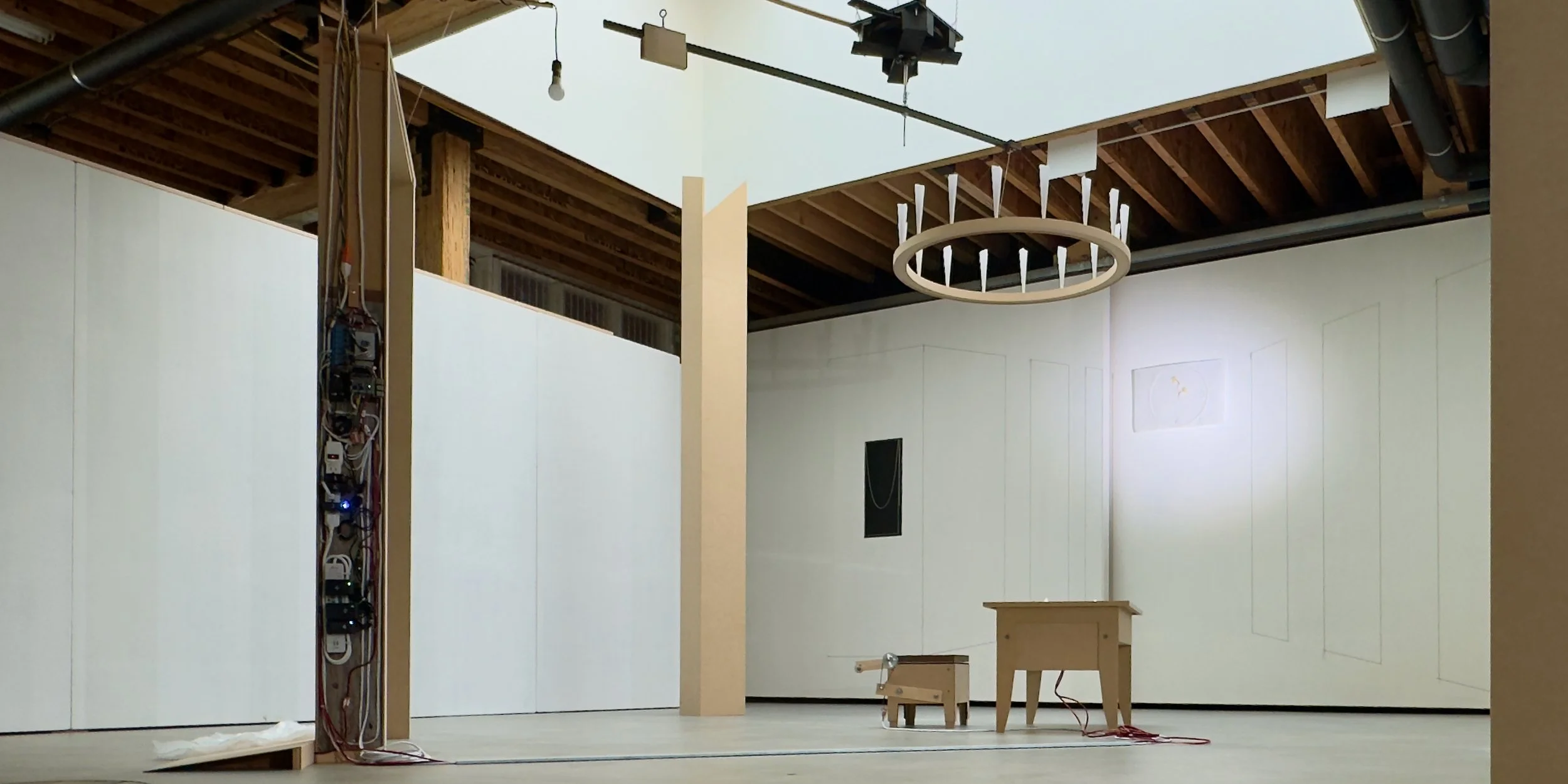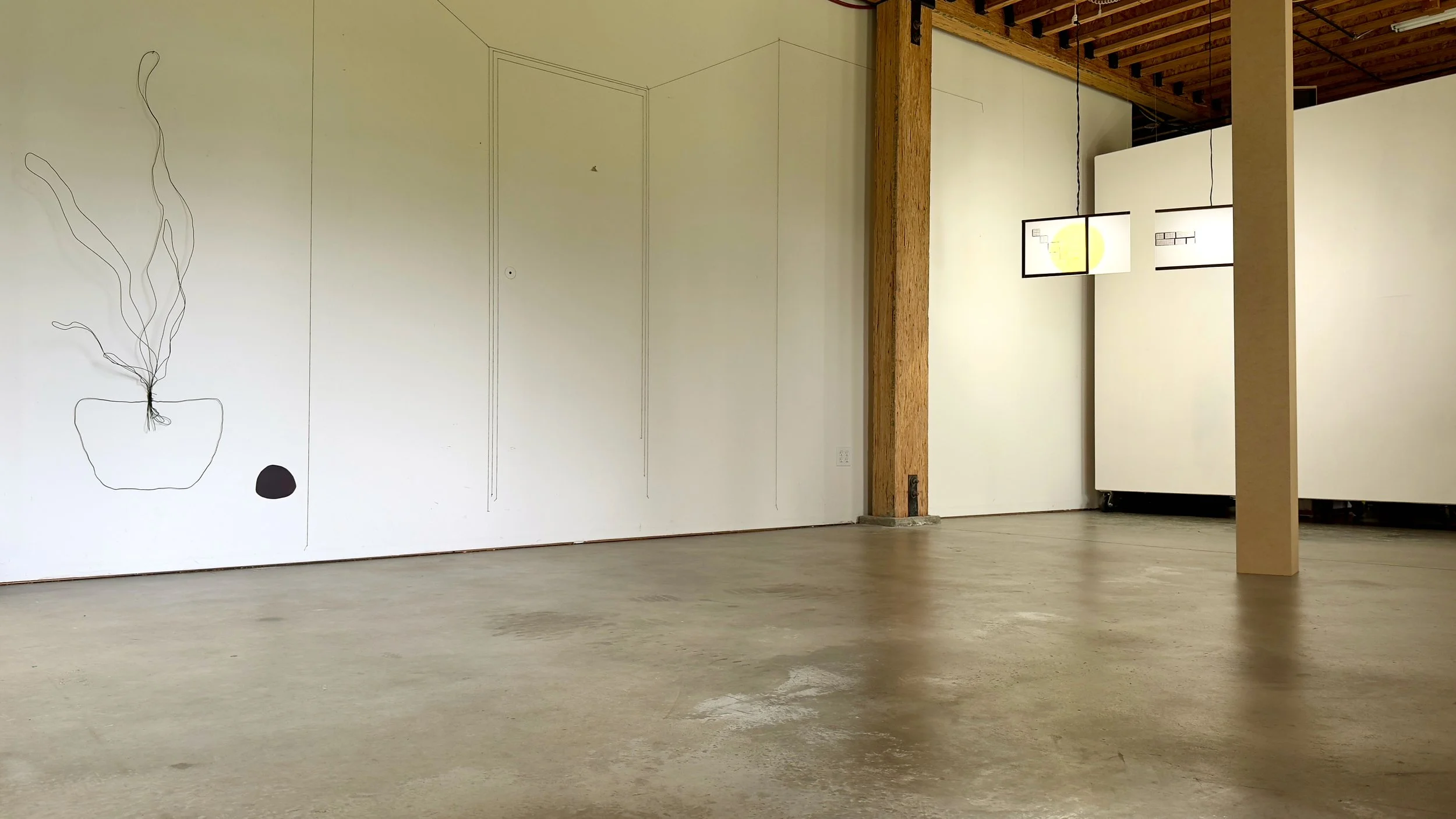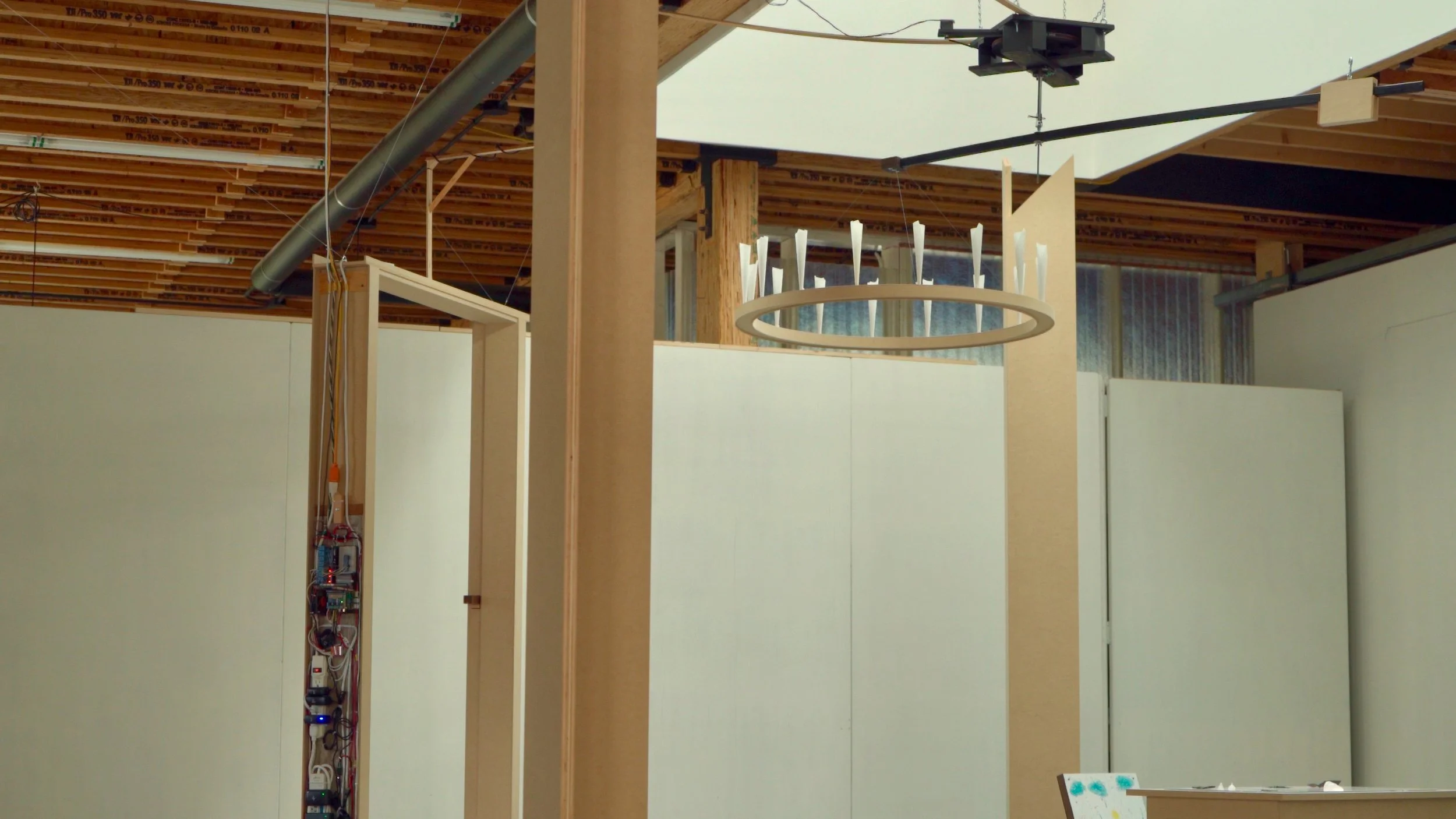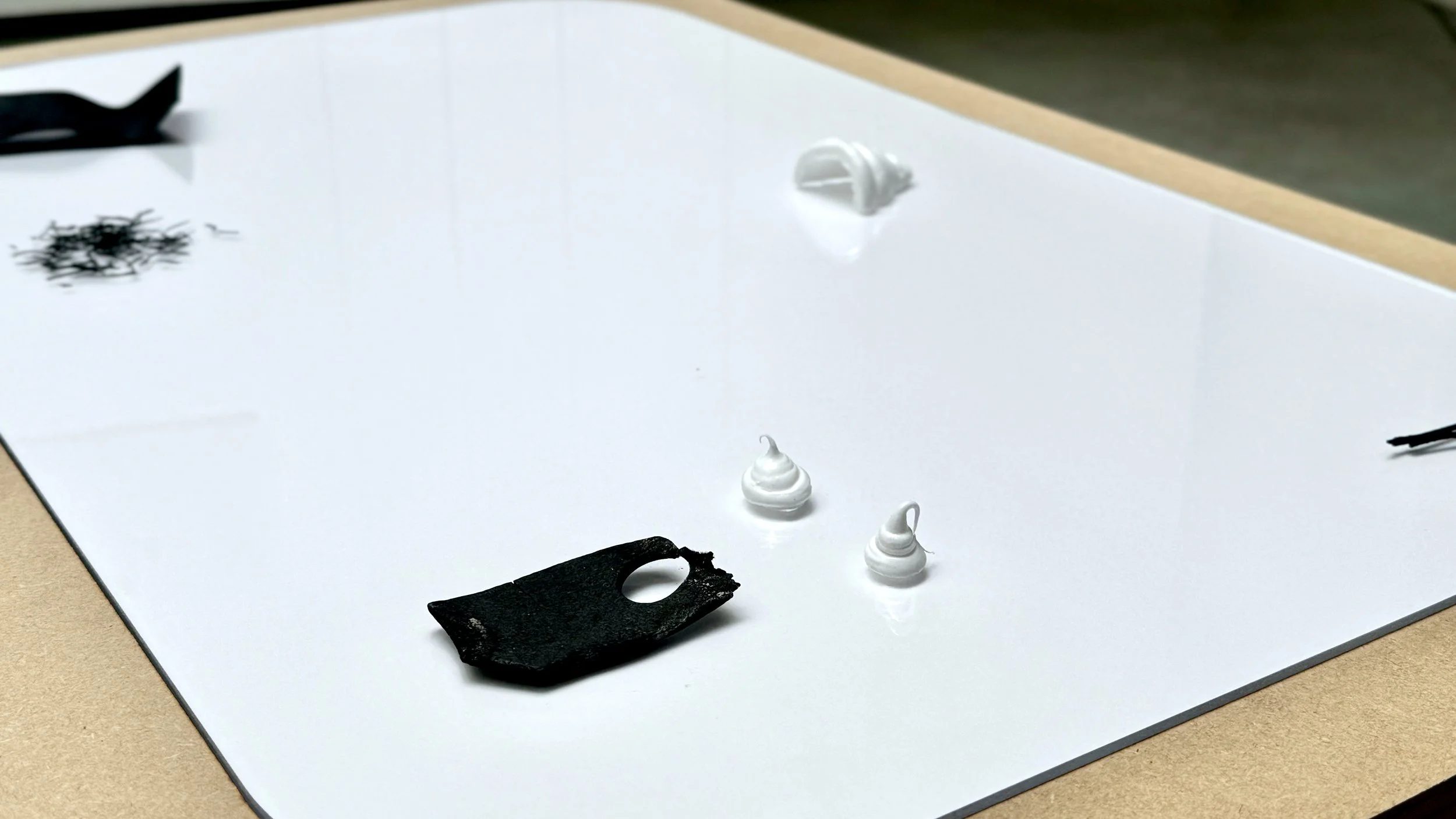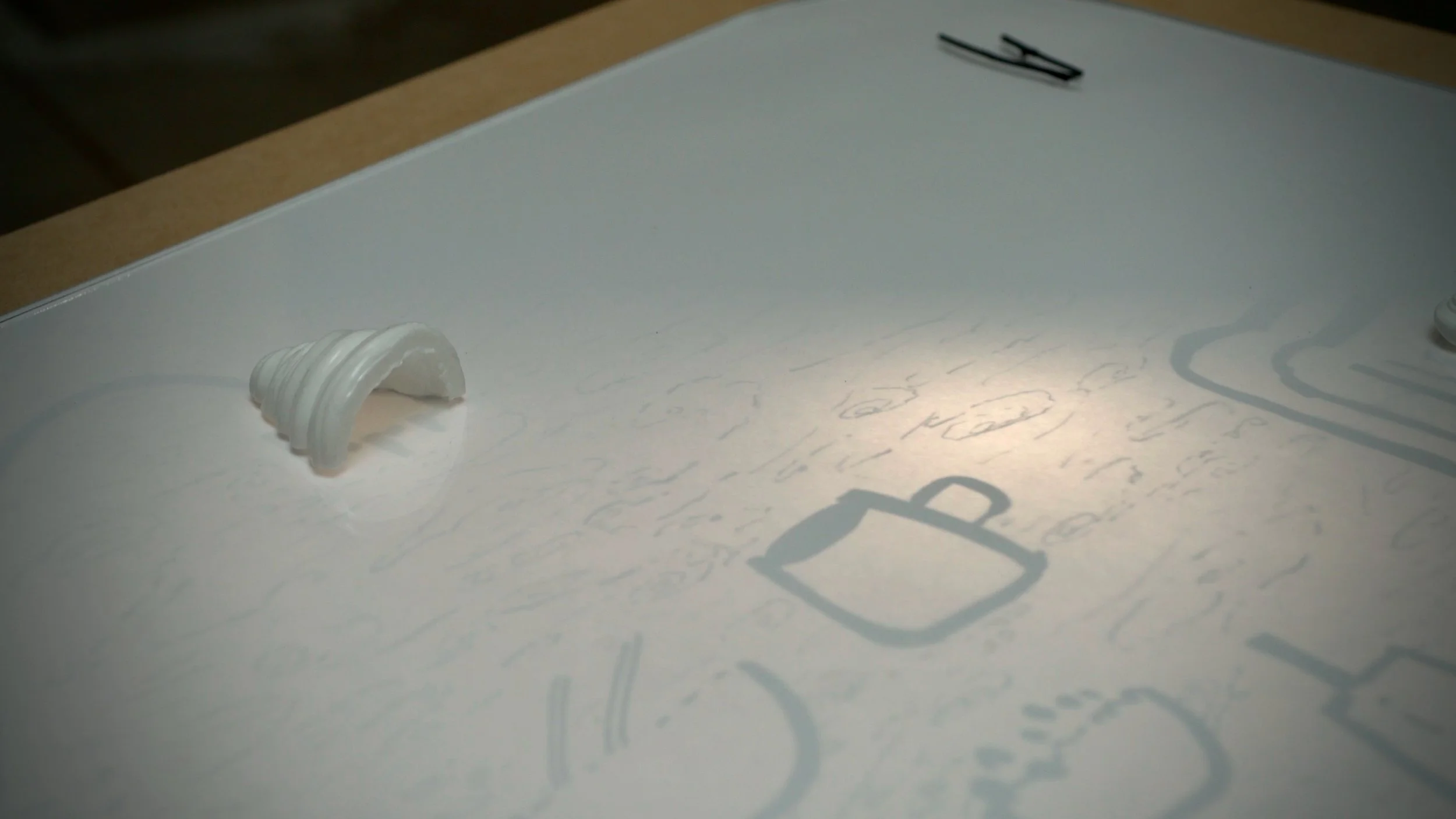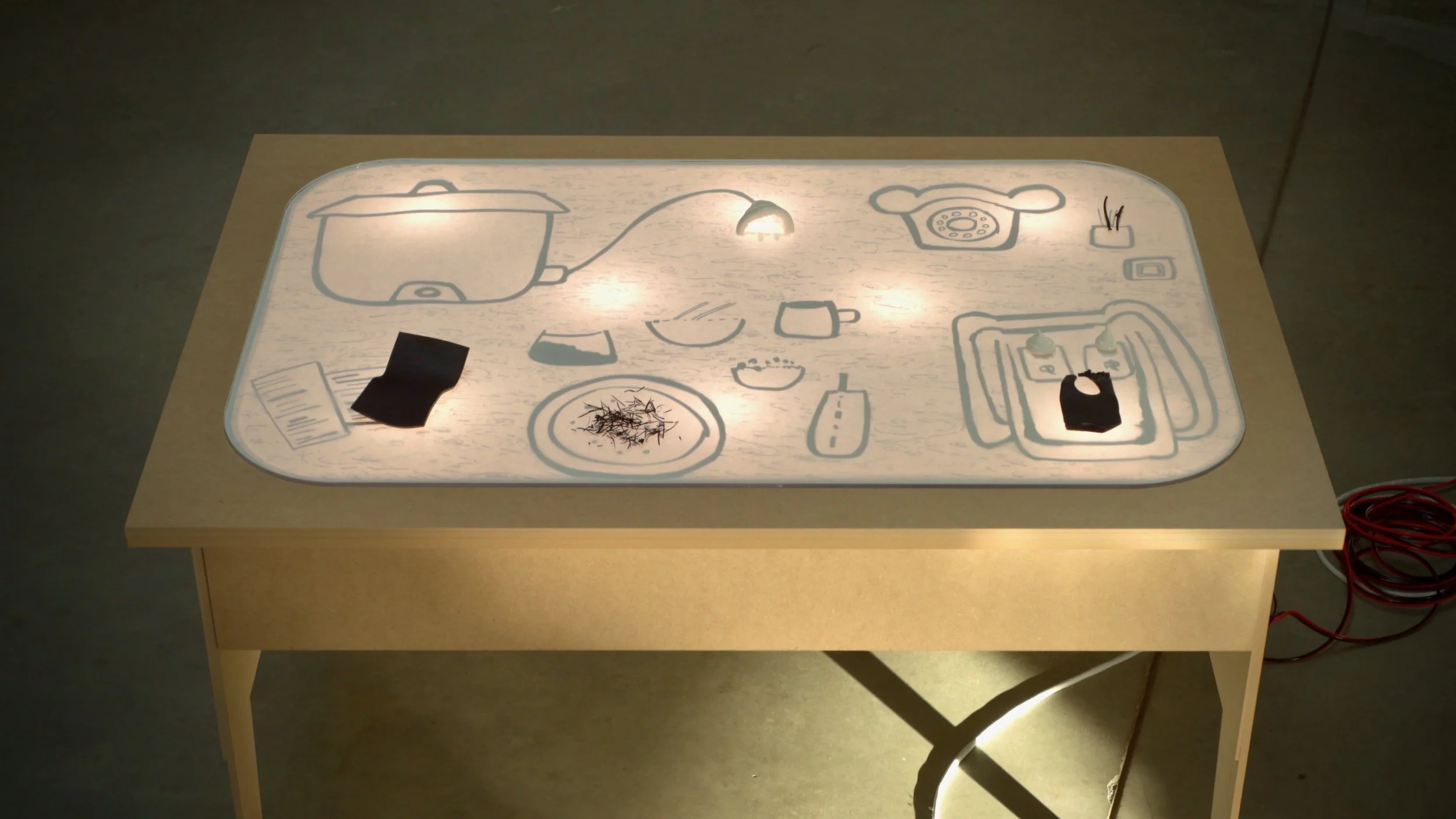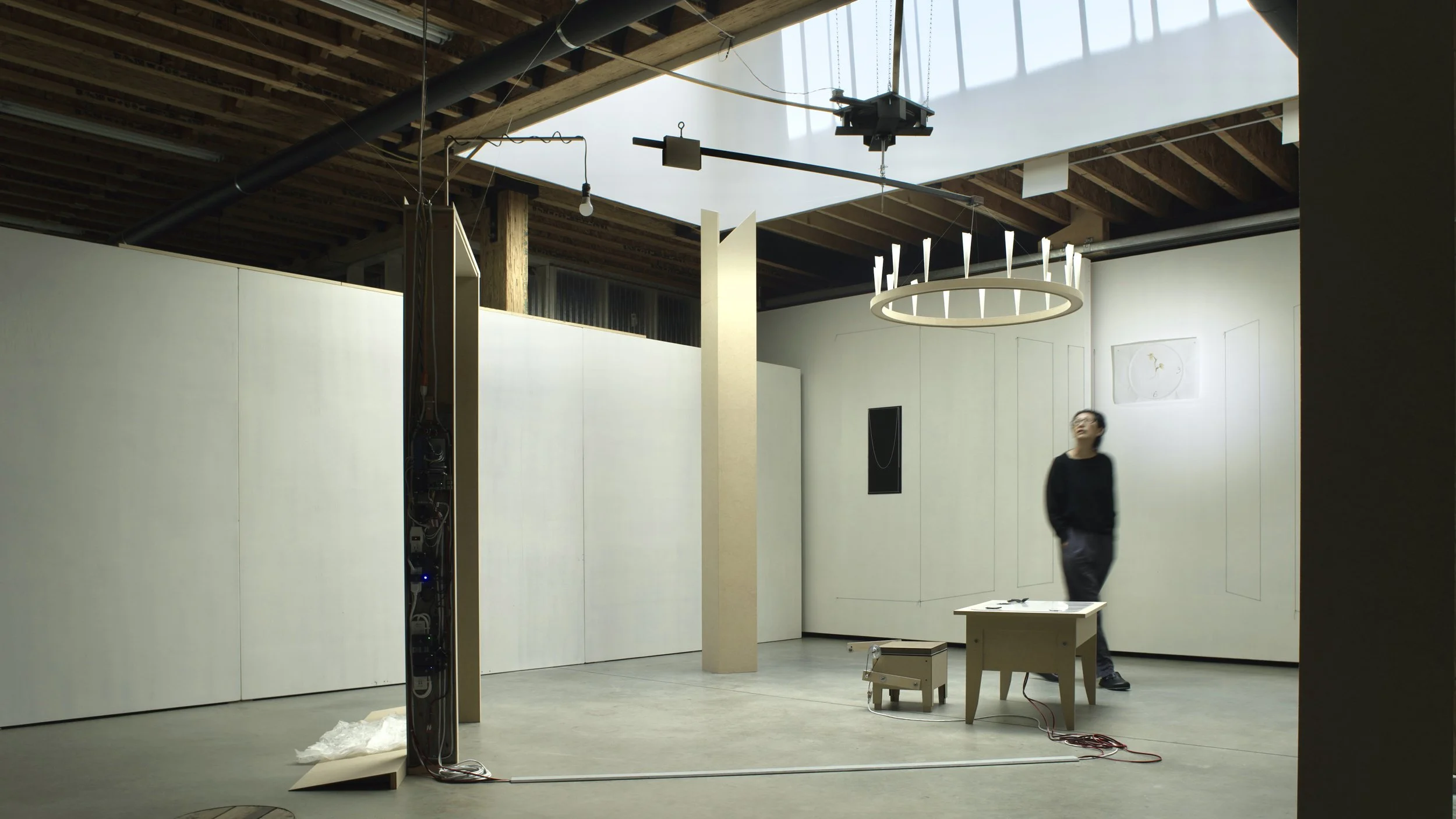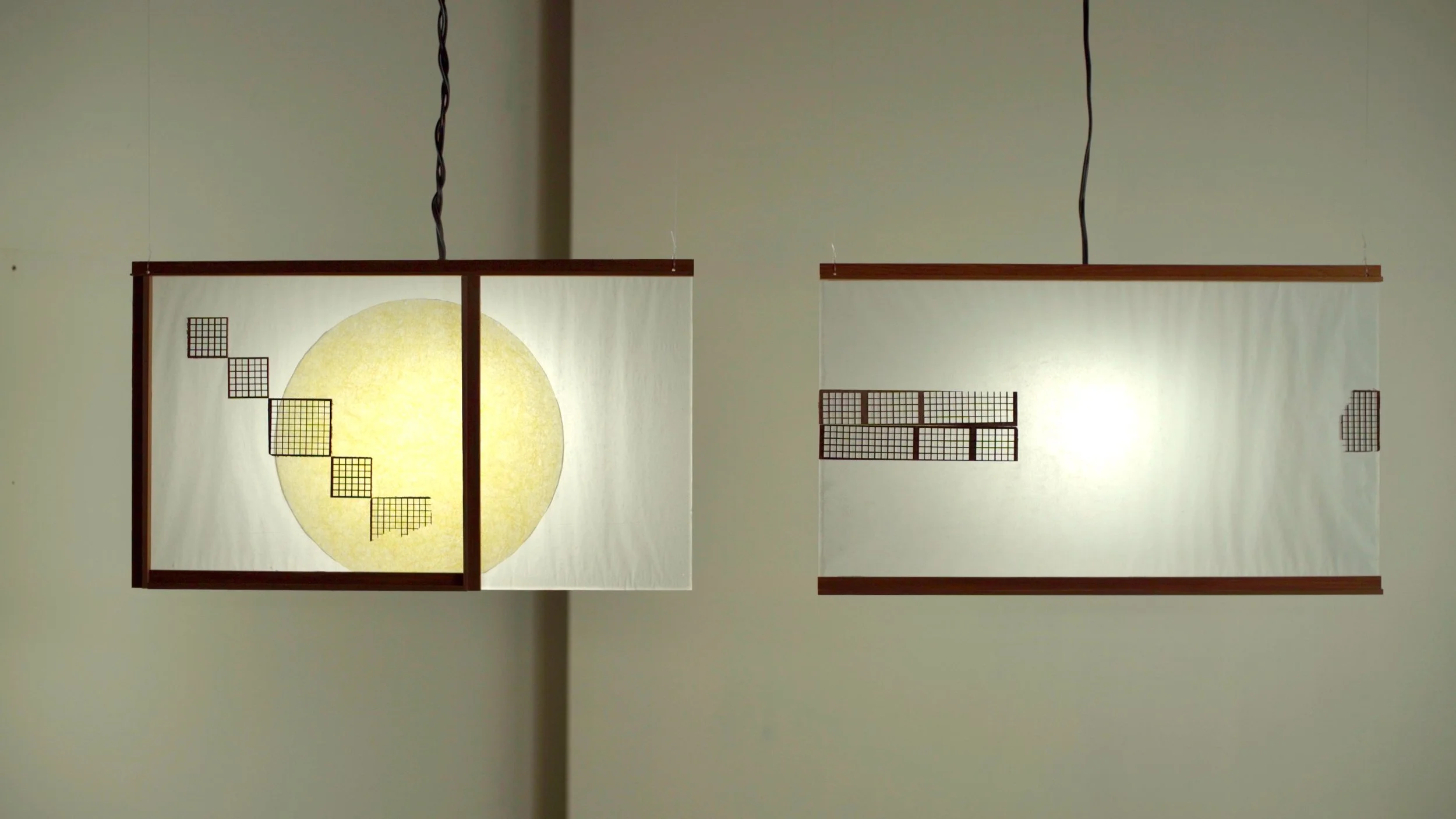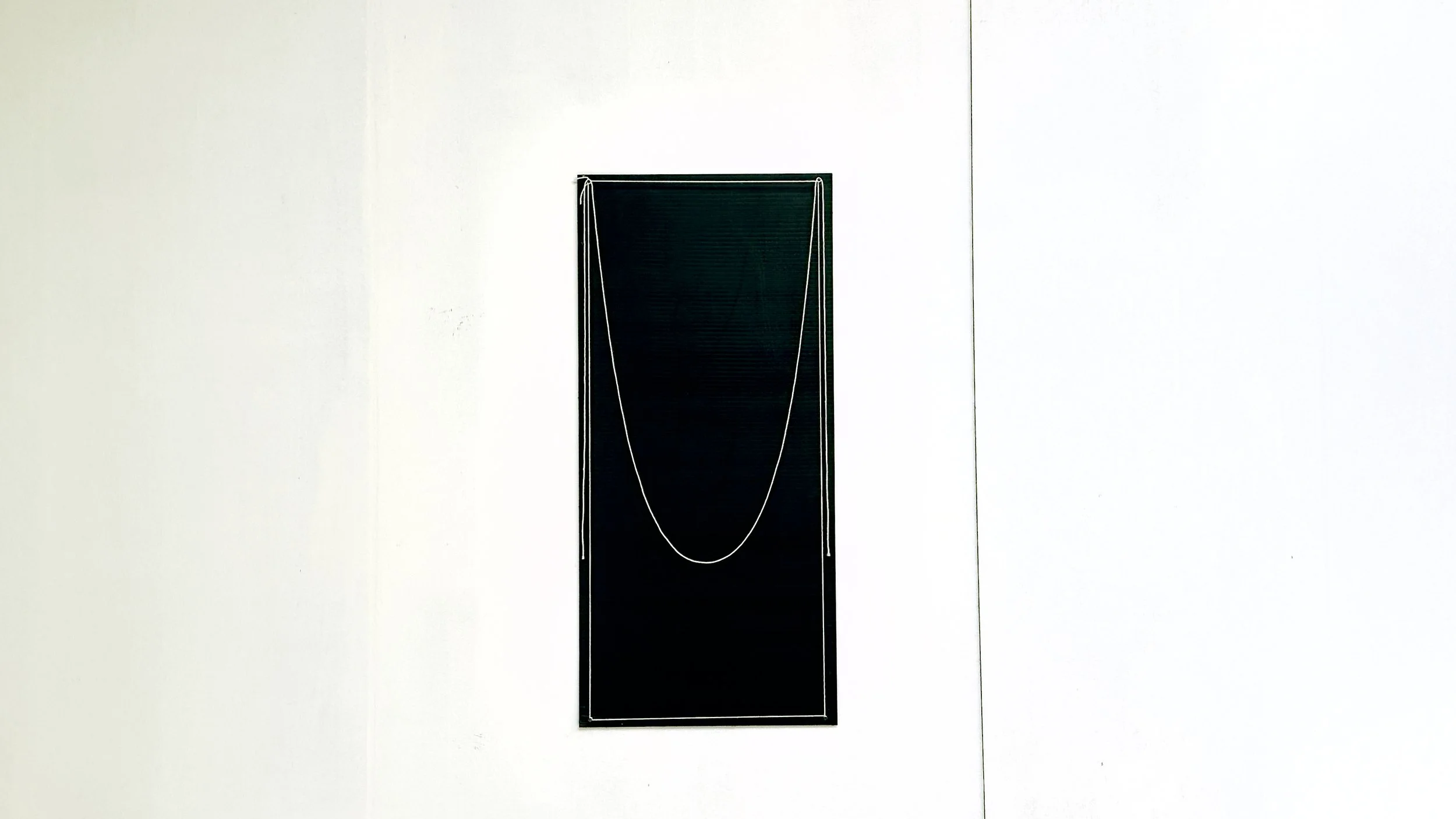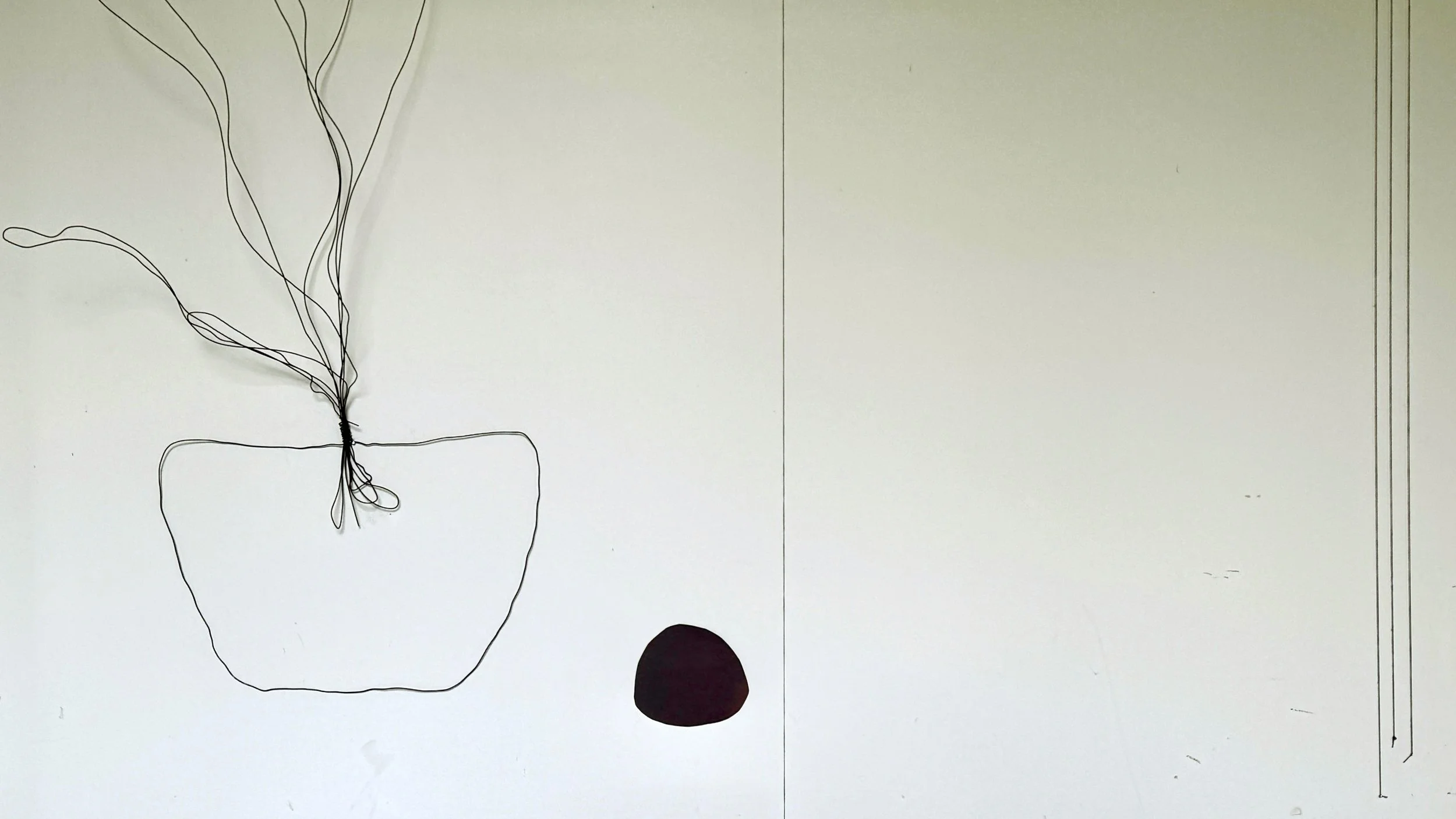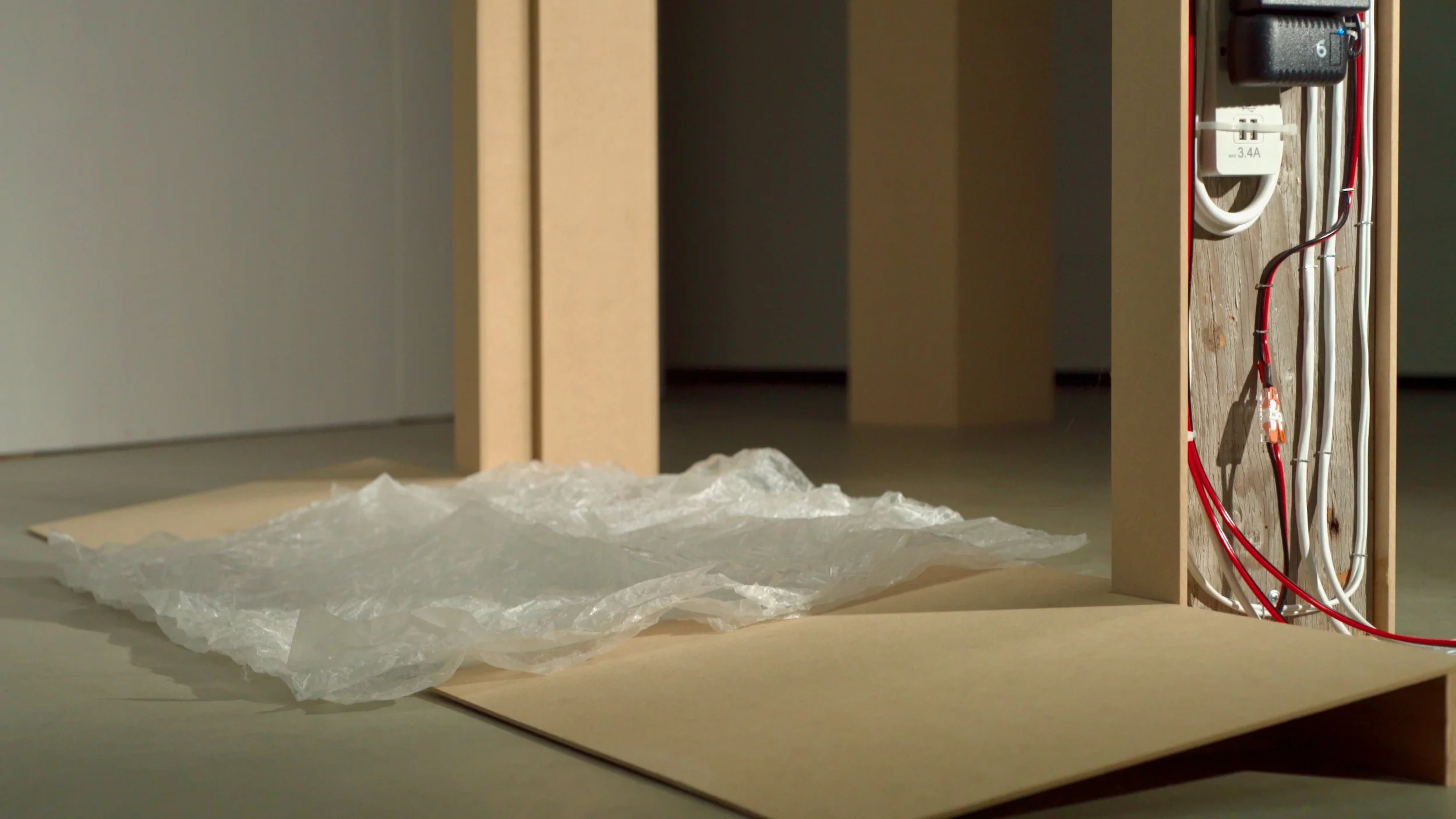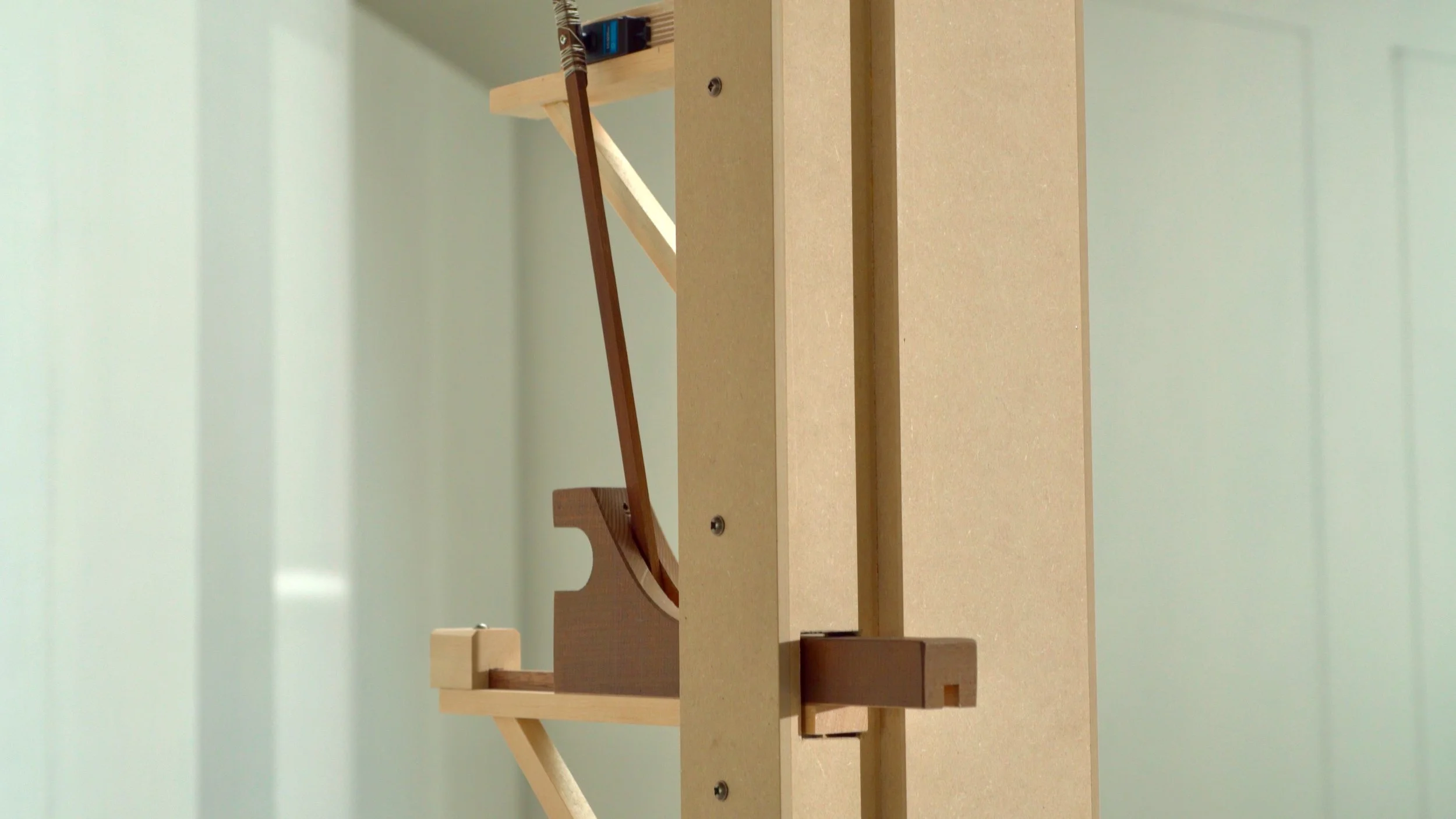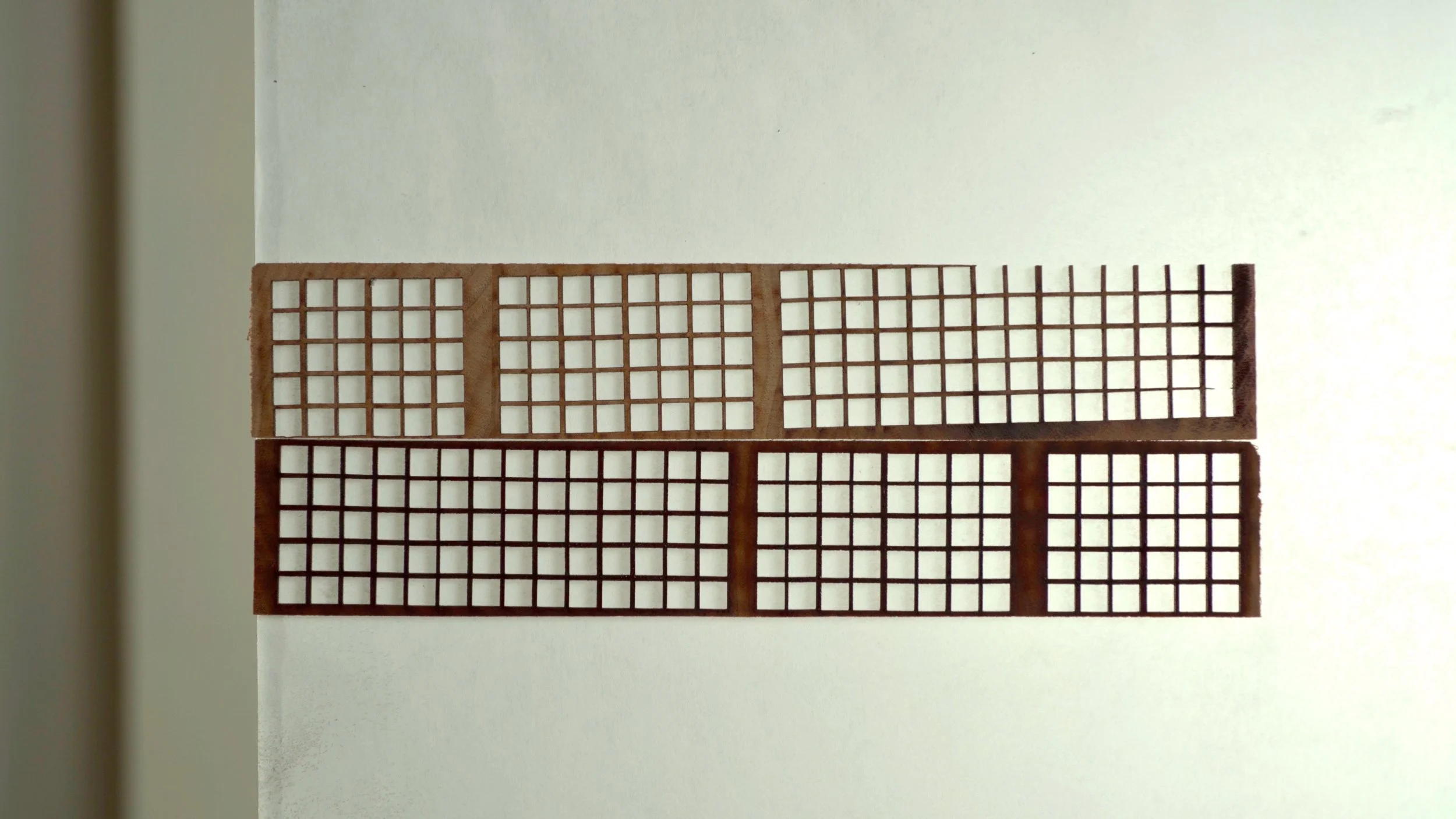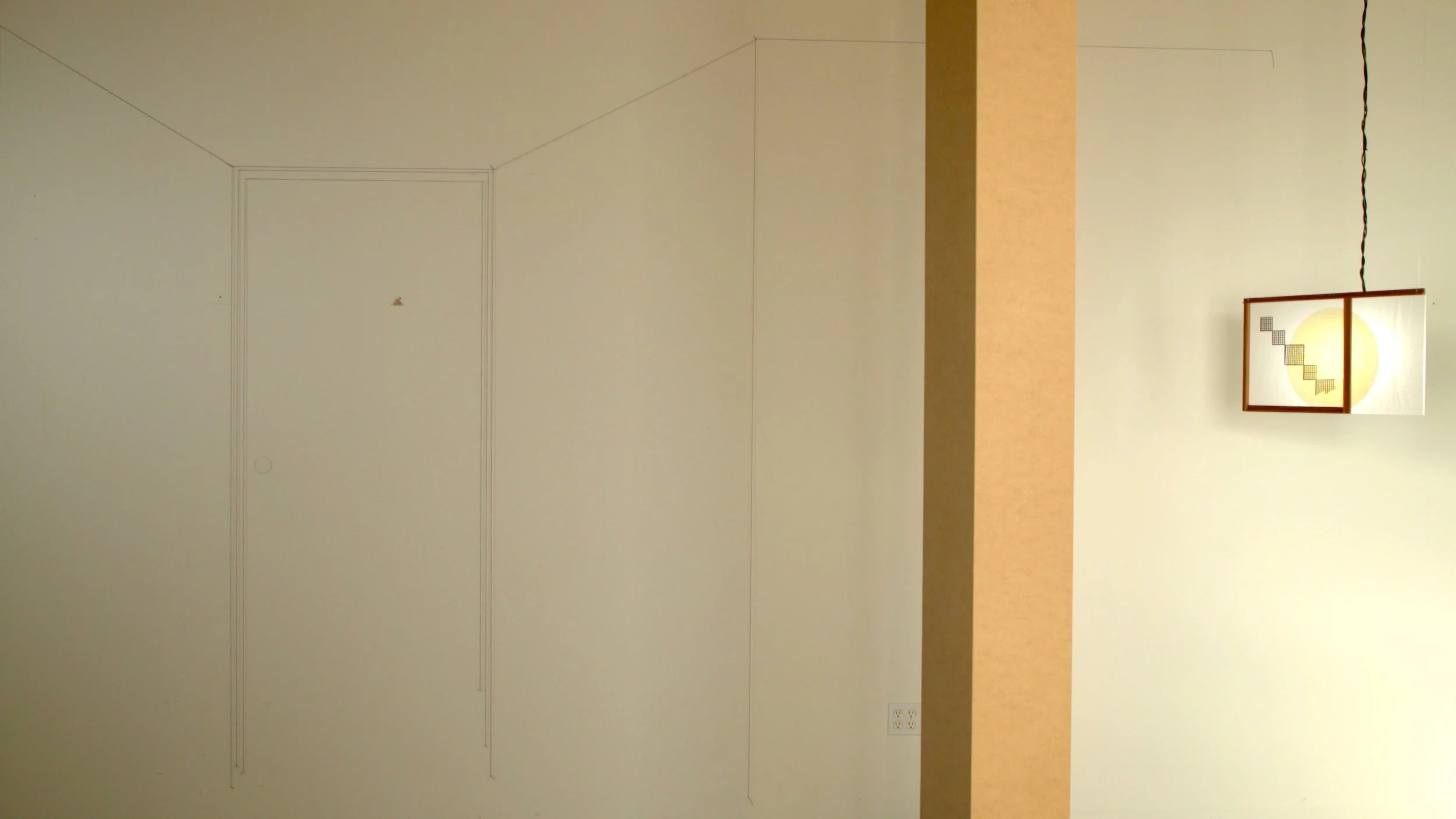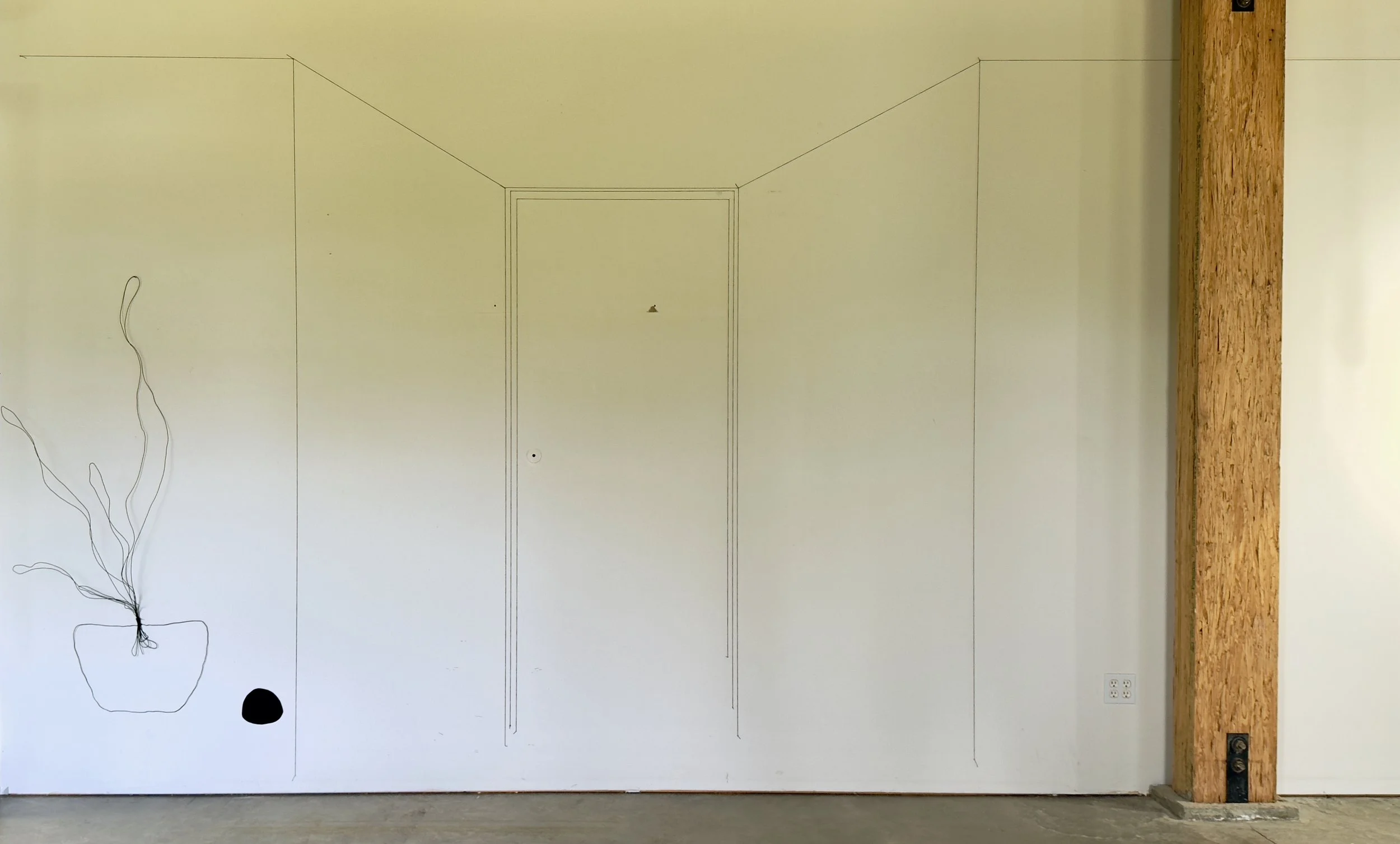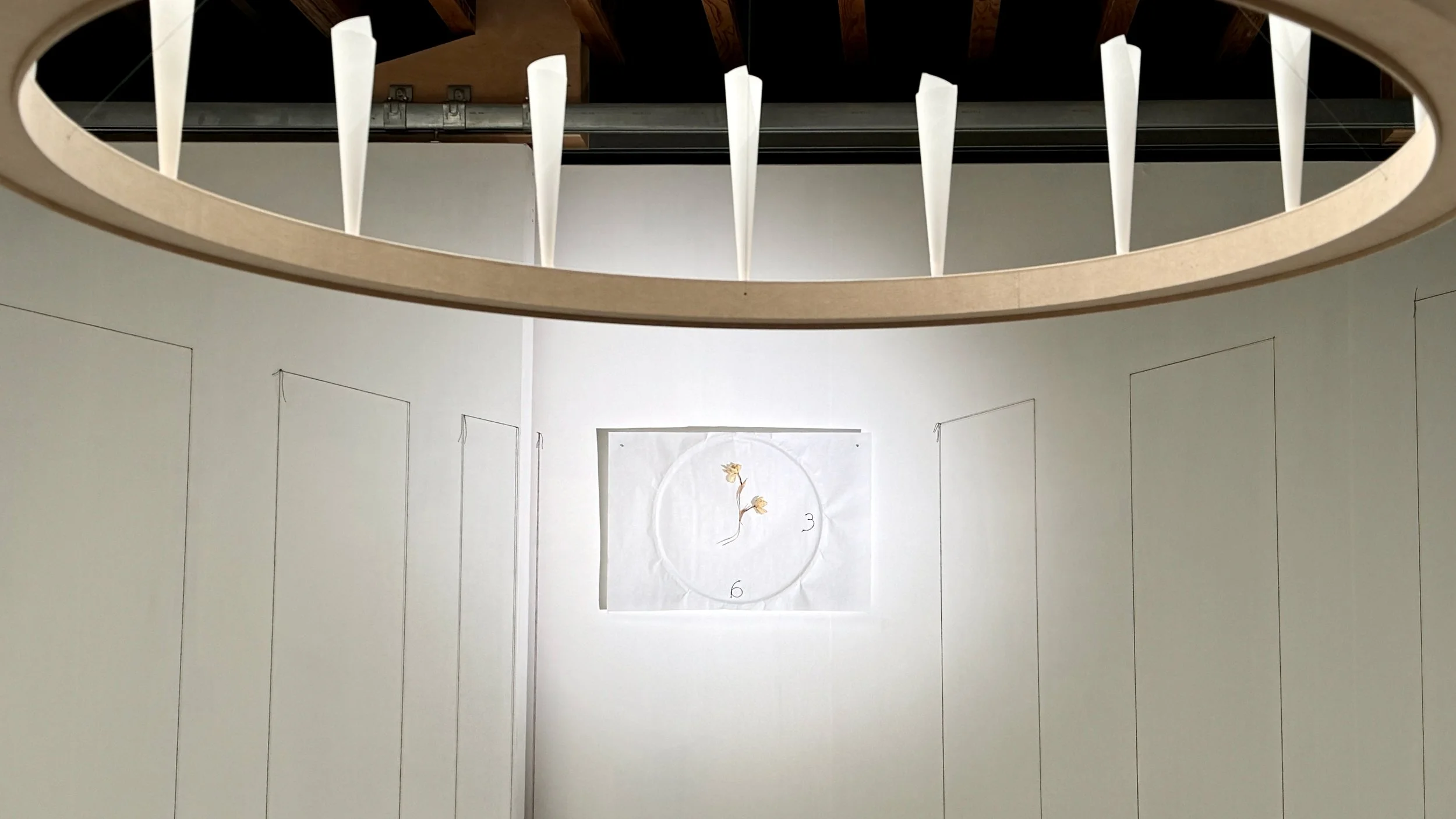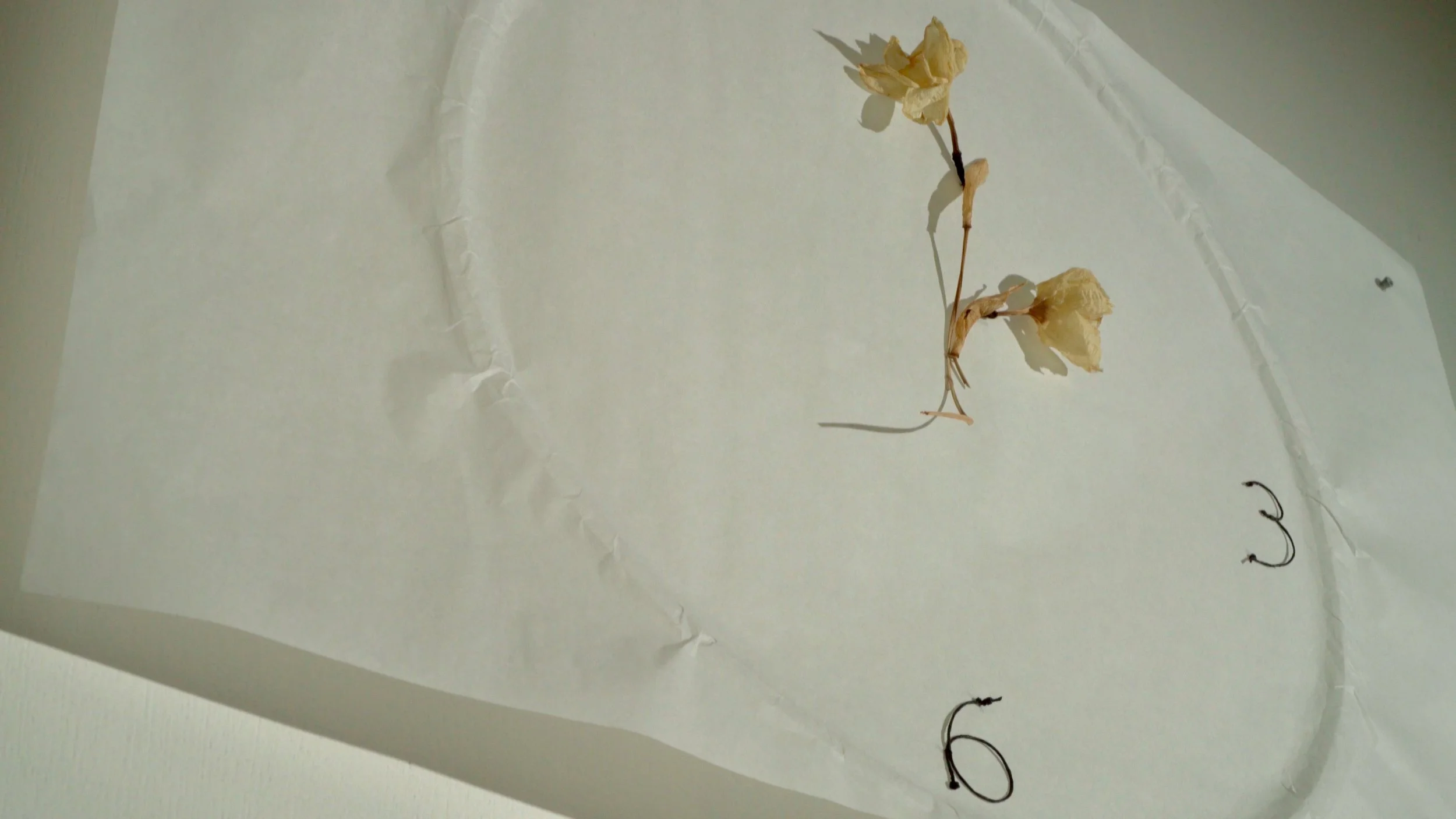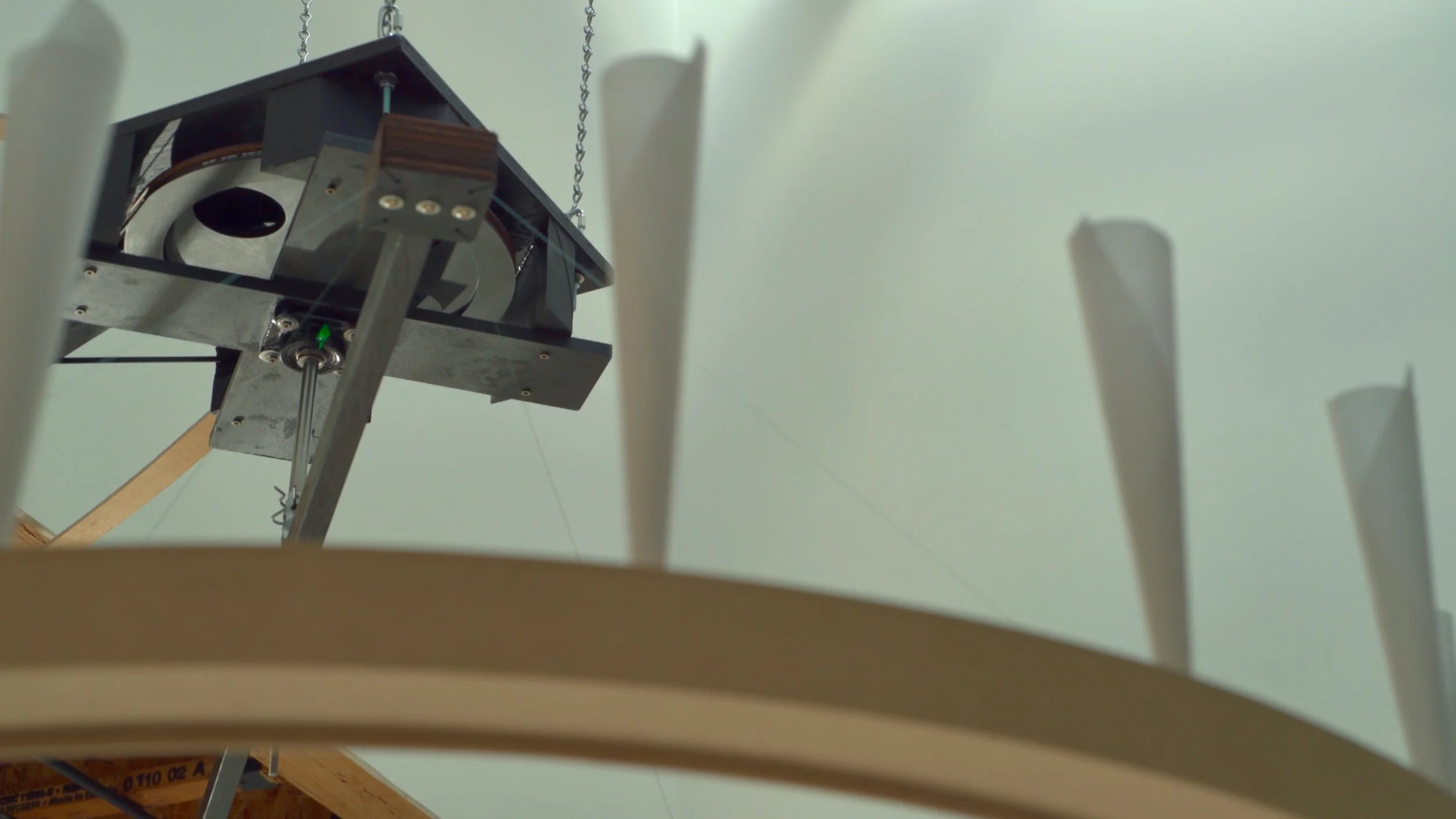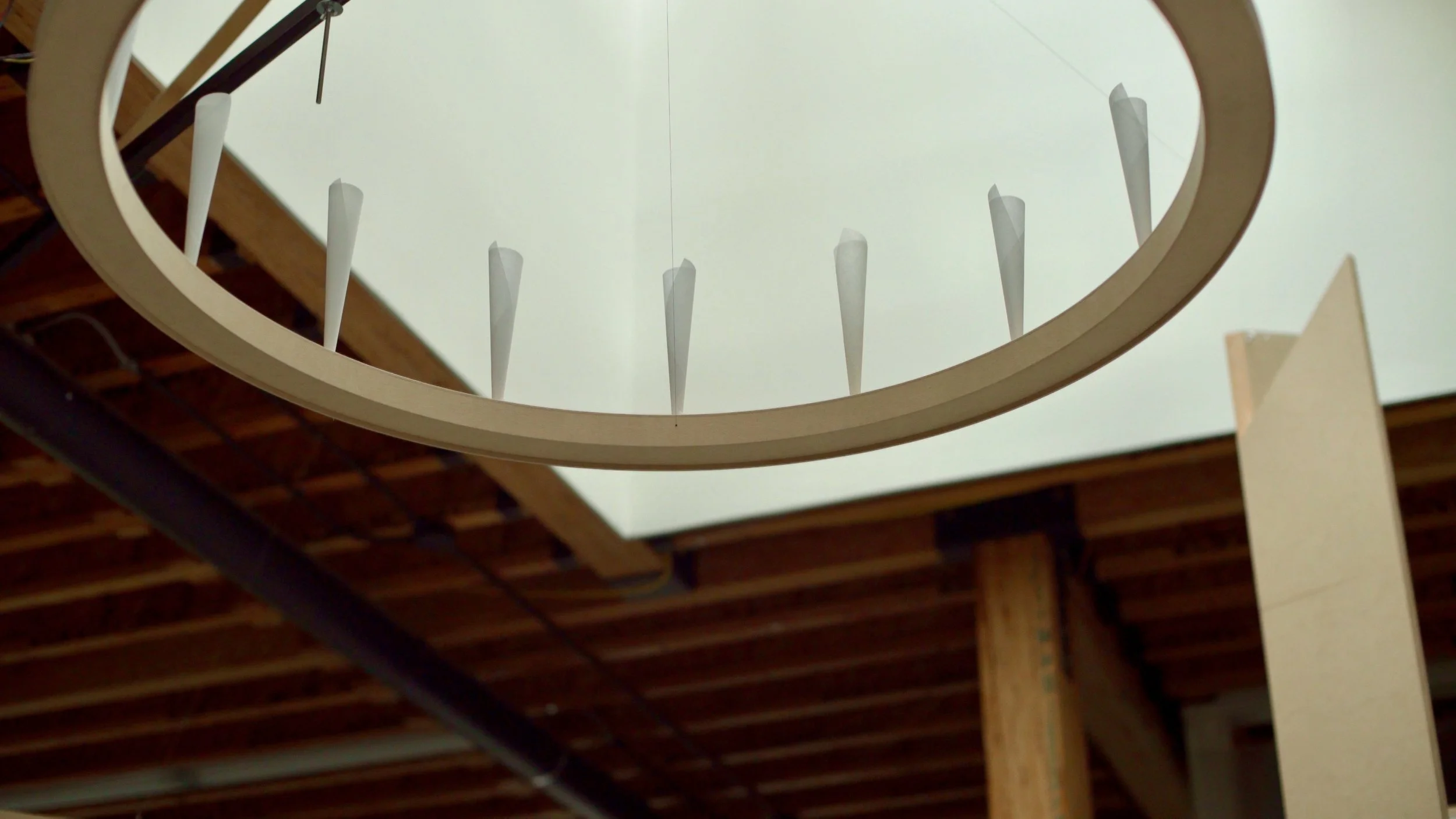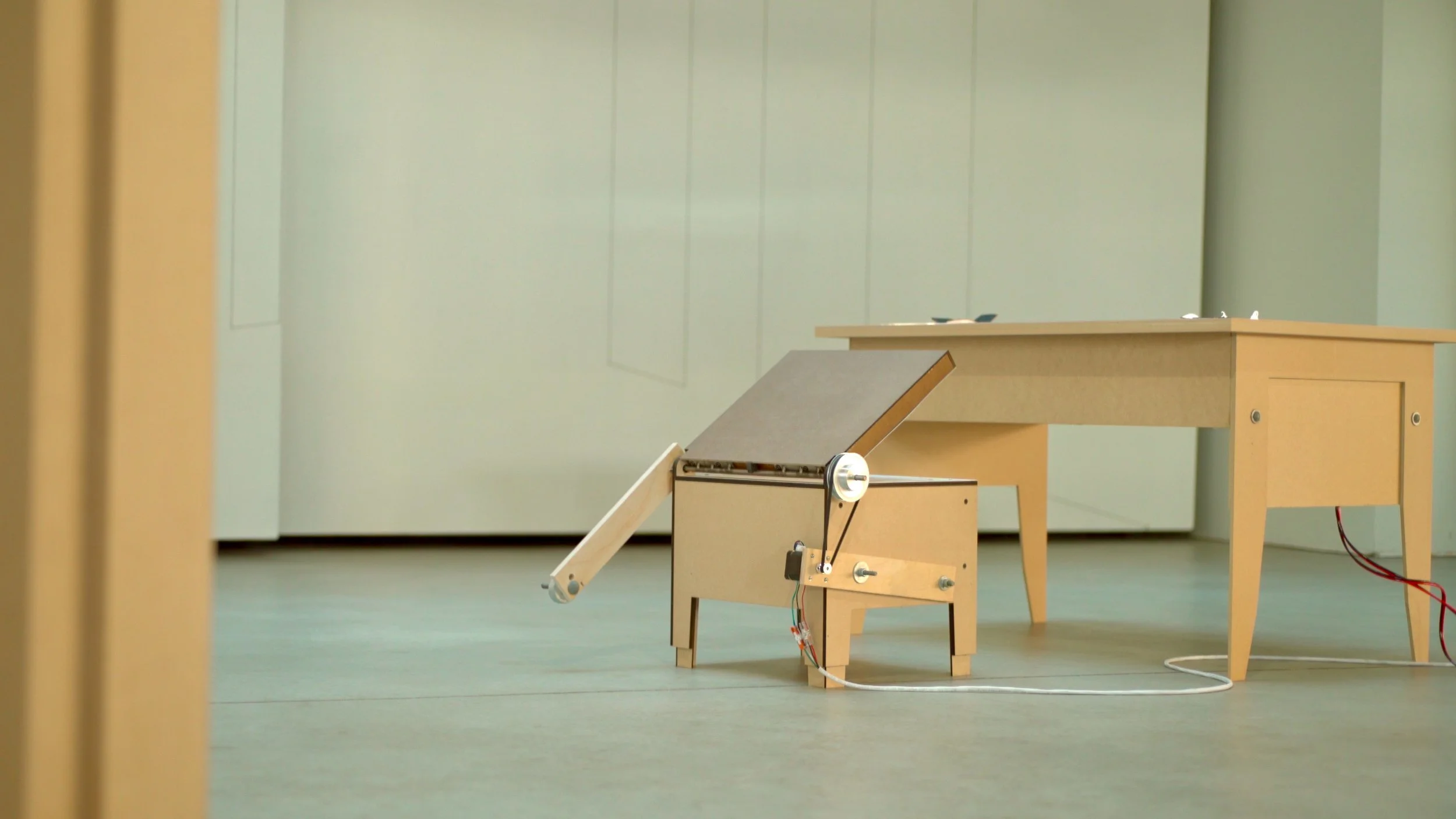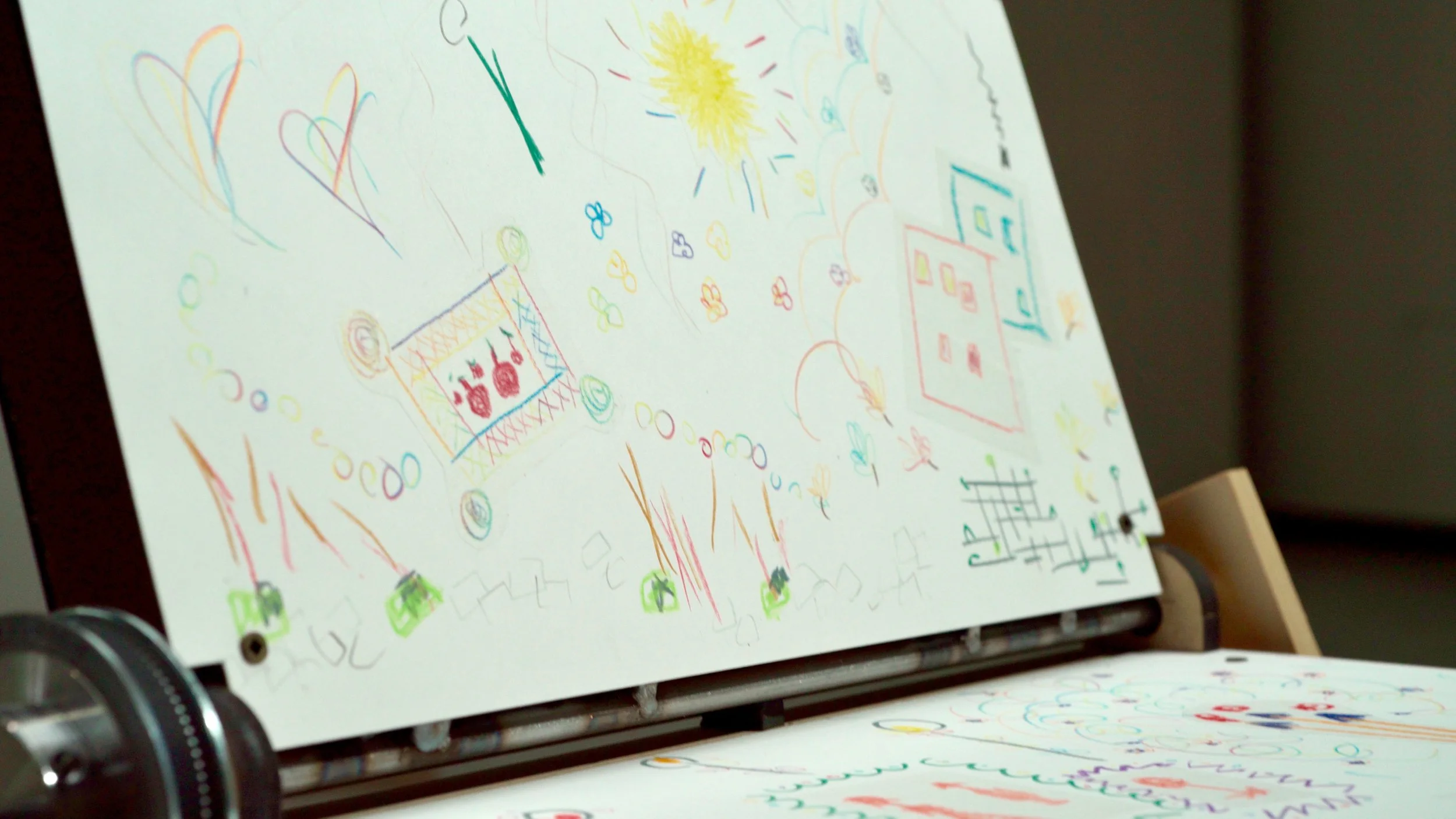H O M E ≠ H•O•M•E
Project Overview
H O M E ≠ H•O•M•E is an automated fictional living room installation exploring the fine line between loneliness and solitude. Drawing from the Zen Buddhist idea of "be a home for yourself," the work invites viewers to engage with how solitude and loneliness emerge and shift through space, sound, and automation.
Integrating Wan-Yi’s experience as a latchkey child from the age of six with spatial principles from contemplative architecture, the installation evokes a shifting emotional landscape and invites reflection on home, belonging, and inner connection.
The title itself encapsulates this dynamic: the expansive "H O M E" versus the fragmented "H•O•M•E." Both solitude and loneliness arise from being alone, yet their experiences differ depending on how we relate to that aloneness. The "partially finished" interior mirrors these emotional gaps—solitude invites contemplation, while loneliness amplifies absence.
H O M E ≠ H•O•M•E reimagines "home" as a psychological state rather than a fixed place. It is a meditation on how solitude and loneliness can arise and shift within the same space, shaped by where our attention comes to rest.
Personal Context (Wan-Yi)
Growing up as a latchkey child, I spent most of my childhood alone. It took many years—and many tears—to learn to transform loneliness into solitude. For me, the difference between the two was night and day. Loneliness ate my sense of self, while solitude, once I found it, became a quiet strength. Having lived both, I became deeply curious about the fine line that separates them—and how, if we can recognize it and choose to cross, something inside us can begin to shift.
Artistic Framework
Spatial elements—geometry, verticality, and horizontal planes—shape an embodied experience of stillness and attention. Like breath in Zen Buddhism, which returns focus to the body and “being a home for yourself,” these elements cultivate embodied awareness. Rather than just defining space, they transform it into a site for contemplation.
Each component carries an emotional imprint from Wan-Yi’s childhood home. The “unfinished” environment becomes a reflective space, inviting the viewer’s personal projection and inner dialogue.
Installation Experience
The “partially finished” environment invites viewers to confront emotional gaps—emptiness in loneliness, depth in solitude. The installation unfolds in two looping atmospheres.
In the first, a narrative emerges: a child returns home and eats alone, accompanied by a commissioned double bass rendition of a Taiwanese folk song from WWII expressing familial separation. The deep resonance of the double bass underscores the emotional weight of loneliness. A chandelier slowly rotates across the empty room—its movement requiring open space— reflecting the vast emptiness that once surrounded the child.
In the second, the narrative ceases. What remains is a space inviting embodied experience—an open field shaped by spatial encounter and imagination, where contemplation and inner connection become possible.
Installation Framework and Credits follow below.
Please note that wall elements are customized according to each space. Some photos below show different iterations, reflecting their potential spatial fluidity.
Installation Framework
Automation Cycle:
On: 170 seconds (including music: 100 seconds)
Off: 120 seconds
Conceptual Framework:
Reflecting on the Zen Buddhist practice of using breath to return attention to the body—as a way of making it a home—this project explores how spatial experience can similarly ground awareness. Drawing from contemplative architecture, the installation uses geometry, verticality, and horizontal planes to create an embodied experience.
Key elements include:
Vertical columns of varying heights and widths to create a sense of depth.
A large chandelier, inspired by contemplative interior furnishings.
Delicate, translucent materials to evoke a sense of transcendence.
Perspective line drawings on the walls to extend space beyond its physical boundaries, fostering a sense of expansion.
A partially finished interior to invite contemplation, leaving room for personal interpretation and reflection.
Neutral-toned MDF for a fictional environment. Its monochrome surface captures light and shadow, highlighting an element often seen in contemplative spaces.
Adaptability:
All installation components are stand-alone and can be disassembled for transport. The overall scale of the installation is adaptable to the available space. Wall elements are customized to each site’s conditions and available surfaces. The photos reflect different iterations of the work, demonstrating its spatial flexibility.
Credits
Musician | Double Bassist: Emillie Kuo 郭馥玫
Instrumental Music: Longing for Your Return (望你早歸), a poignant Taiwanese folk song written during WWII, reflecting the longing of families separated by war.
Automation Design and Controls: Wan-Yi Lin with the assistance of ChatGPT
Mechanical Design and Advanced Woodworking: Roger Chen
Videography and Editing: Roger Chen
Funding: Canada Council for the Arts, BC Arts Council
